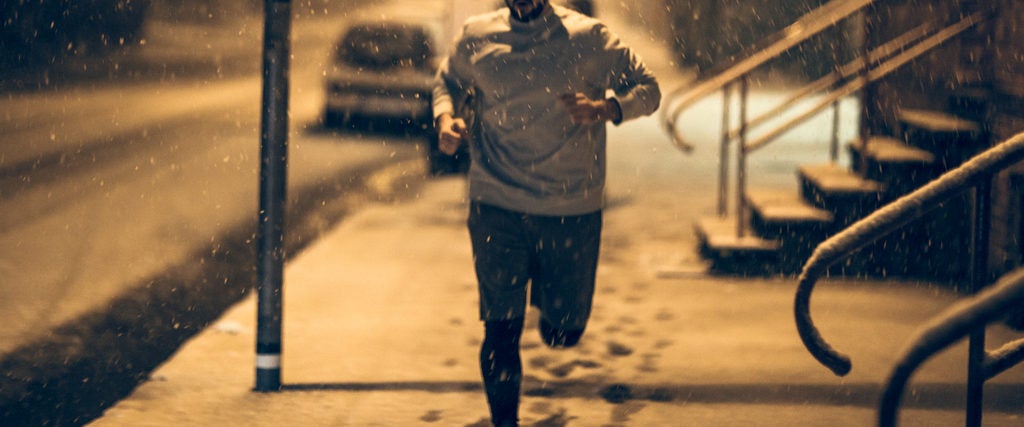As someone who runs outside throughout most of the Chicago winter thanks to a deep sense of frugality and a hatred of treadmills, I’ll be the first to tell you that it sucks. Your legs are stiff. Your nips chafe. And most of all, it’s fucking cold — really, really, really fucking cold. But now that joining a gym is out of the question as the pandemic continues to rage on, I have another concern: How do I exercise in cold weather without getting sick?
Now, I should note that cold weather doesn’t directly cause illness. “Getting sick is a result of exposure to viruses and bacteria,” says Leann Poston, a physician in Ohio. The reason we believe otherwise is because the cold and flu often spike during cold weather seasons. But that has more to do with more people hanging out and breathing germs all over each other indoors than it does with moving your body outdoors. Better yet, exercising in general “strengthens your muscles and makes it easier to clear your lungs of any infection,” Poston explains.
You should still, however, take a few precautions when working out in cold weather.
For starters, because cold air is irritating to your nose and lungs, Poston recommends wearing a scarf (or mask!) to warm the air you breathe, as well as your face. With less restricted nasal passages, you’ll be less likely to start sniffling, and thus, avoid a scare that you might be sick (which in these corona times is an absolute imperative). This also helps maintain your core body temperature, which can suppress the cold virus’ ability to reproduce in case you happen to be already sick.
Keeping core body temperature in mind, 19-time world champion powerlifter Robert Herbst reasons, “If cold weather made people sick, there would be no lumberjacks.” And so, do as the lumberjacks do, and wear layers. “That way you can peel them off as you get warmer, and put them back on if you get too cool,” he says.
Make sure, though, that those layers are light and breathable — i.e., not cotton. Disregarding how many and what kind of layers you should wear to work out in the cold allows moisture to get trapped next to your skin, which is what leads to hypothermia. “When I was climbing mountains in Nepal, we had a saying: ‘Cotton kills,’” Herbst says.
A companion to the cold-weather-sickness myth is the idea that you lose 80 percent of your body heat from your head. My dad was a big proponent of this one, but it’s also bullshit. But that doesn’t mean your head doesn’t lose any heat. As such, hats and gloves also go a long way in making it easy to maintain your core body temperature. (Another bonus: Gloves will provide a barrier between your germ-covered hands and your mouth whenever you blow warm air on them.)
Moving on, it’s not a bad idea to warm up inside first either — particularly if you have asthma or upper respiratory problems. Doing a few burpees and stretches will both help you avoid injuries and keep your body from having to work overtime at correcting your core body temperature.
For what it’s worth, the same all goes for cold weather weight training, with an emphasis on warming up the muscles and keeping them warm by adding layers between sets to avoid injury. Herbst says he typically lifts and does strongman movements outside until the snow on the ground makes it unsafe. “As a practical matter, your grip is weaker in the cold, especially when the handles get cold and slippery,” he advises. “This is why traditional cold weather exercises such as chopping wood are always a good way to go.”
Ultimately, when it comes to getting sick, exercising outside in freezing temperatures is hardly better or worse for you than when it’s sweltering out. But that doesn’t mean it doesn’t suck; so I understand the frustration of not being able to exercise in the comforts of a hot gym for the next six months.
Herbst, though, offers some advice along those lines as well. “Exercising outdoors is invigorating and builds character,” he tells me. “When I wrestled in college, I would run outside during Christmas break and the sweat would stream down from under my hat and freeze into icicles in my hair. I figured from that alone, no one could out tough me.”
You heard the man — now get out there and start chopping some wood.

